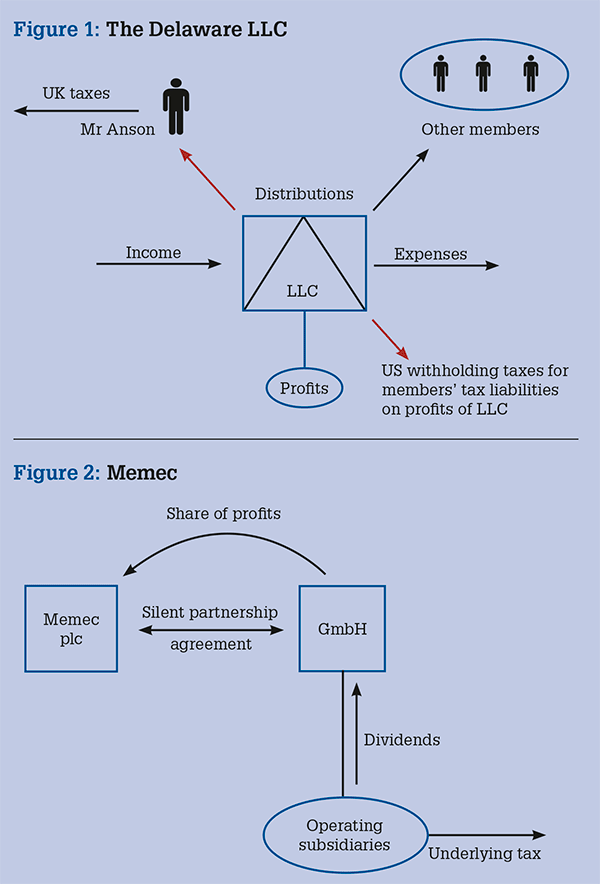The Supreme Court’s judgment in Anson v HMRC has been keenly anticipated. It was never just about claiming double tax relief for investments in Delaware LLCs, but goes to the heart of entity classification. A general concern had been that the Court of Appeal's requirement for a proprietary interest in the entity's assets was too onerous for transparency. The decision went the other way, however, and Mr Anson won. Good news for Mr Anson, but we are left with a somewhat confusing test, likely to result in the need to reconsider the classification of many non-UK entities.
Charles Yorke (Allen & Overy) reviews the Supreme Court’s decision in Anson v HMRC and its wider impact on entity classification.
 [2015] UKSC 44 were that Mr Anson was one of a number of members of a Delaware LLC (see figure 1 below). The LLC was transparent for US tax purposes, and Mr Anson was taxed at a rate of 45% on his share of the profits of the LLC as they arose. Mr Anson filed his UK income tax returns on the basis that the LLC was a partnership for UK tax purposes and so was taxed on a similar basis. Double tax credits were claimed and no further UK tax was thought to be due.
[2015] UKSC 44 were that Mr Anson was one of a number of members of a Delaware LLC (see figure 1 below). The LLC was transparent for US tax purposes, and Mr Anson was taxed at a rate of 45% on his share of the profits of the LLC as they arose. Mr Anson filed his UK income tax returns on the basis that the LLC was a partnership for UK tax purposes and so was taxed on a similar basis. Double tax credits were claimed and no further UK tax was thought to be due. 
The Supreme Court’s judgment in Anson v HMRC has been keenly anticipated. It was never just about claiming double tax relief for investments in Delaware LLCs, but goes to the heart of entity classification. A general concern had been that the Court of Appeal's requirement for a proprietary interest in the entity's assets was too onerous for transparency. The decision went the other way, however, and Mr Anson won. Good news for Mr Anson, but we are left with a somewhat confusing test, likely to result in the need to reconsider the classification of many non-UK entities.
Charles Yorke (Allen & Overy) reviews the Supreme Court’s decision in Anson v HMRC and its wider impact on entity classification.
 [2015] UKSC 44 were that Mr Anson was one of a number of members of a Delaware LLC (see figure 1 below). The LLC was transparent for US tax purposes, and Mr Anson was taxed at a rate of 45% on his share of the profits of the LLC as they arose. Mr Anson filed his UK income tax returns on the basis that the LLC was a partnership for UK tax purposes and so was taxed on a similar basis. Double tax credits were claimed and no further UK tax was thought to be due.
[2015] UKSC 44 were that Mr Anson was one of a number of members of a Delaware LLC (see figure 1 below). The LLC was transparent for US tax purposes, and Mr Anson was taxed at a rate of 45% on his share of the profits of the LLC as they arose. Mr Anson filed his UK income tax returns on the basis that the LLC was a partnership for UK tax purposes and so was taxed on a similar basis. Double tax credits were claimed and no further UK tax was thought to be due. 







